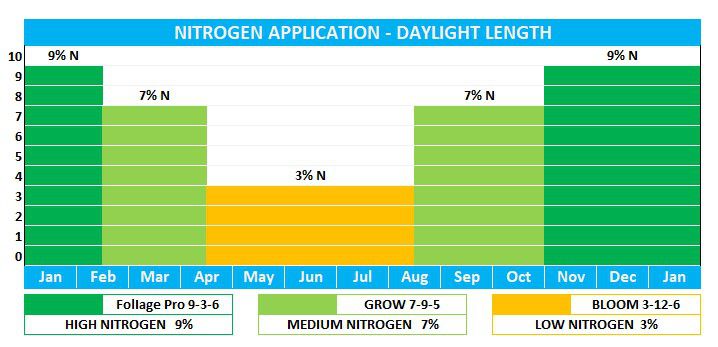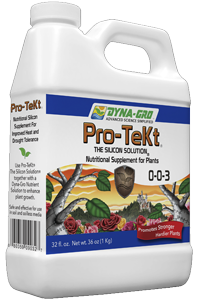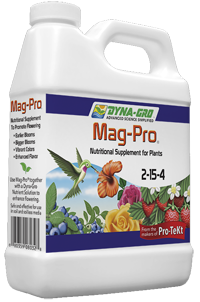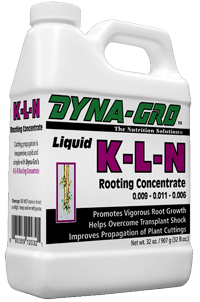3 Options for feeding your orchids (pot plants) using Dyna Gro
Below I describe 3 techniques for feeding orchids and other flowering plants grown in pots (hoya). The techniques can be adapted for use with all pot plants.
Are you starving your pot plants?
What are essential elements (nutrients)?
For an element to be regarded as essential, three criteria are required:
- A plant cannot complete its life cycle without the element.
- No other element can perform the function of another element.
- The element is directly involved in plant nutrition.
Count the nutrients
A note about potting substrates (mix)

Copy how orchids get their nutrients in their nature
- Every time it rains, the orchid's roots have access to nutrients dissolved in the rainwater.
- The nutrients dissolved in the rainwater exist in very dilute or minor quantities.
This means that orchids are fed fairly regularly with a weak nutrient solution every time it rains. This is why we say that you should feed orchids weakly, weekly, i.e. feed your orchids a weak nutrient solution often.
CHOOSING A NUTRIENT PROGRAM
- Dyna Gro Pro-TeKt. Pro-TeKt is added as a source of silicon which helps to develop a strong (tough) cell structure and balances the pH effect of the nutrient solution.
- Dyna Gro Mag-Pro. The additional magnesium and sulphur helps to improve the leaf colour and increase flower count and size.
- KLN Rooting Solution will gently stimulate the development of roots.
- Seaweed Soil Concentrate or BioPower Seaweed Flake adds extra nutrients and organic compounds missing from synthetic nutrient solutions.
OPTION I. Use one nutrient solution (fertiliser) all year round.
- Dyna-Gro Orchid-Pro 7-8-6
- Dyna-Gro GROW 7-9-5

OPTION II. Using a nutrient solution to match the orchid's growing phase.
I. Growth Phase (Vegetative Phase)
- The growth phase is when orchids produce new stems, leaves or roots. The nutrient requirements call for large amounts of Nitrogen (N) which the orchid uses to produce chlorophyll and is also a vital component of proteins, hormones, vitamins and enzymes.
- It is during this stage that most of an orchid's growth occurs.
- Stimulating growth (leaf production) increases the total leaf surface area. This translates to a plant having more leaf surface area to photosynthesise. It is the by-product of photosynthesis that plants use to create structure(cells). This, in turn, should contribute to better flowers.
II. Blooming Phase (Reproductive Phase)
- This is when an orchid's energies are directed at reproduction, i.e. flower production.
- During the blooming phase, Nitrogen is no longer the main nutrient required, and fertilisers typically have higher Phosphorus and Potassium levels.
- Phosphorus is essential for seed germination, photosynthesis, protein formation, overall growth and metabolism, flower and fruit formation, and Potassium is essential for the formation of sugars, carbohydrates, proteins, and cell division. Phosphorus also adjusts water balance; improves stem rigidity and cold hardiness; enhances flowers' colour and oil content.
III. Dormant Phase
Using Dyna Gro Nutrient Solutions:
- Growth Phase - Dyna-Gro GROW 7-9-5.
- Bloom Phase - Dyna-Gro BLOOM 3-12-6.

OPTION III - Nitrogen Cycling, match Nitrogen levels to daylight length
The Nitrogen Cycling program was shared with me by Malcolm Moodie a member of the British Paphiopedilum Society. He is also an award-winning paphiopedilum grower.
The image on the left is one of his plants grown using the Nitrogen Cycling program
Paphiopedilum Fumi's Delight
(P. armeniacum X P. micranthum)
Certificate of Cultural Commendation by the RHS Orchid Committee in March 2022

As the earth moves through the four seasons, daylight length changes. The image below shows the difference in daylight hours for New Zealand. The longest daylight hours occur from December to January, and the shortest daylight hours occur from June to July.

When the daylight hours are the longest, plants will be photosynthesising more than during shorter daylight hours.
Chlorophyll is the compound plants use to convert energy from the sun to produce sugars from water and carbon dioxide. Plants use these sugars (carbohydrates) to produce plant structure (growth). Nitrogen is a major part of the chlorophyll molecule.
We can conclude that during the longer daylight hours, we should be applying more Nitrogen and less Nitrogen for the shorter daylight hours.

- Dyna-Gro Foliage Pro 9-3-6 contains 9% Nitrogen. It is used when higher levels of Nitrogen are required.
- Dyna Gro GROW 7-9-5 contains 7% Nitrogen. It is used when transitioning from a high Nitrogen nutrient solution to a low Nitrogen level nutrient solution.
- Dyna Gro Bloom 3-12-6 contains 3% Nitrogen. It is used when the lowest level of Nitrogen is required.

- Plants require Silicon (Pro-TeKt) for strong cell structures and rebalancing the pH effect of nutrient solution.
- Increased Magnesium improves the leaf colour and increases flower count, size and bouquet.
- We also recommend boosting plant growth and health from the addition of KLN Rooting Solution or Seaweed once a month
PS: The fertiliser, Pro-TeKt and Mag-Pro should be mixed together in the water. Always add the Pro-TeKt first then the rest of the ingredients. The same applies to the monthly application of KLN or Seaweed.
MORE OPTIONS

Option 1. Strengthen cell structure, improve pest and disease resistance, heat, cold and drought stress and assist with nutrient uptake.
- Assists with nutrient uptake, increase the rate of growth and develop stronger stems.
- Helps support the weight of dense flowers.
- Deposited in a hard, opalene form in the epidermis of leaves and stems which adds mechanical strength and supports a plant's natural defence against insects and fungal infection.
- Helps plants become more tolerant to drought, heat and cold stress.

Option 2. Support flower development and photosynthesis by feeding additional Magnesium, Sulphur and Phosphorus
Dyna-Gro Mag-Pro encourages the development of flowers and will assist improve the beauty of their orchid flowers.
- This unique plant supplement can be used with any Dyna-Gro Nutrient Solution as a blossom booster to help initiate flowering and develop large, vibrant, fragrant flowers.
- Mag-Pro gives your orchids the ability to access the nutrients they need at critical times of flower formation to ensure massive growth and aroma through increased production of essential oils, terpenes, and flavonoids.
- Use Mag-Pro instead of a calcium/magnesium supplement because there is ample calcium in all Dyna-Gro Nutrient Solution formulas.

Option 3. Increase Root Growth and Mass with KLN Rooting Concentrate
K-L-N Concentrate is a blend of nutrients known to help stimulate the production of vigorous root development in all plants.
- One of your objectives for growing orchids should be to cultivate a good, healthy root mass. It stands to reason that a healthy, vigorously growing root mass, forms a good foundation for growth and flowering. Roots are the main vehicle plants use to absorb water and nutrients.
- One way to maintain and stimulate root growth is to use K-L-N once a month. Incorporate it with the Dyna-Gro Nutrition Solution of your choice.
- Use K-L-N Concentrate added to your Dyna-Gro Nutrient Solution once a month throughout the growing season. Do not use K-L-N Concentrate during periods of dormancy, or when flower initiation is desired.

Option 4. Improve growth and plant health with a seaweed drench.
- A monthly root drench with Ocean Organics Soil Seaweed Concentrate supplies the nutrients that are missing from nutrient solutions plus a whole lot of the compounds that help to promote growth and health.
- It is not uncommon to hear plant fanatics mention how seaweed has changed the well-being of their plants.
- Please note that seaweed is not a fertiliser it does not contain enough NPK to continuously support plant growth. It should be viewed as a tonic for plants, similar to the concept.
Optimising the pH of your nutrient solution for better absorption
pH is a logarithmic scale used to measure the acidity/alkalinity of your nutrient solution. The scale ranges from 0 to 14. If the pH is 7, the solution is considered to be neutral. A pH value less than 7 is considered acid, and a pH value greater than 7 is alkaline.
The pH of your nutrient solution is important because it affects the availability and absorption of all the mineral elements needed for plants to grow. The best absorption of these elements is at pH readings of between 5.5 to 6.8.
When pH falls outside this range, many of the elements will be less available, and the absorption of the micronutrients can reach toxic levels.
Dyna Gro have a chart that illustrates nutrient uptake and availability based on the pH range.
Products that you can use to modify the pH range of your nutrient solution are:
- Dyna Gro pH Down
- Dyna Gro pH Up
- Dyna Gro Pro-TeKt
I have also written a short article on how to use citric acid to adjust the solution pH.
CONCLUSION
- Fine-tuning your orchid nutrient program is not the only step of your orchid growing journey. Other factors like the light, humidity, temperature range, type of potting mix and watering frequency also need to be optimised.
- Remember the above recommendations are not absolute, they are a recommendation. Experiment with dosage rates to find what works with how you grow your orchids. Compared to other plants, orchids grow slowly. It may take some time to see the results.
- Of the options mentioned above, I believe that the nitrogen cycling program is the best option.
- Dyna-Gro has been developing and providing growers with products and information for over 34 years. Their products work and produce excellent results for growers all around the world.
